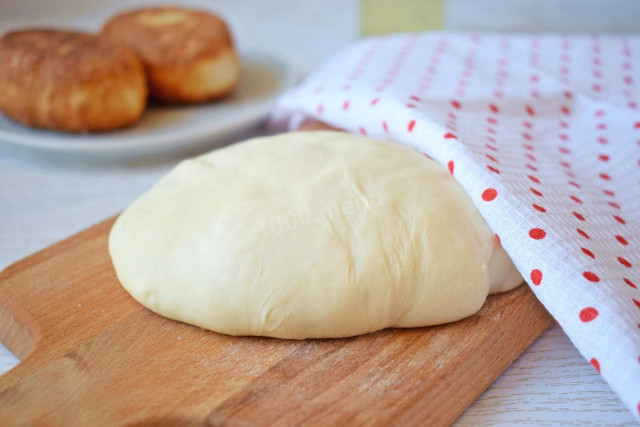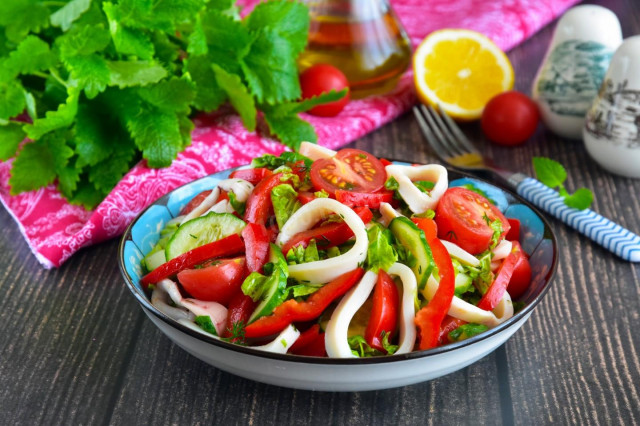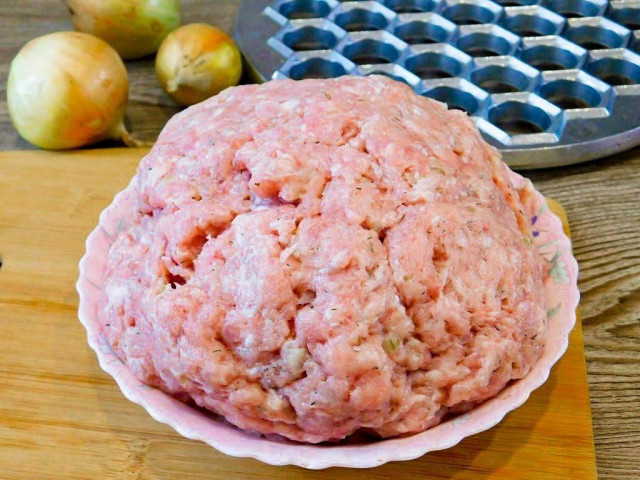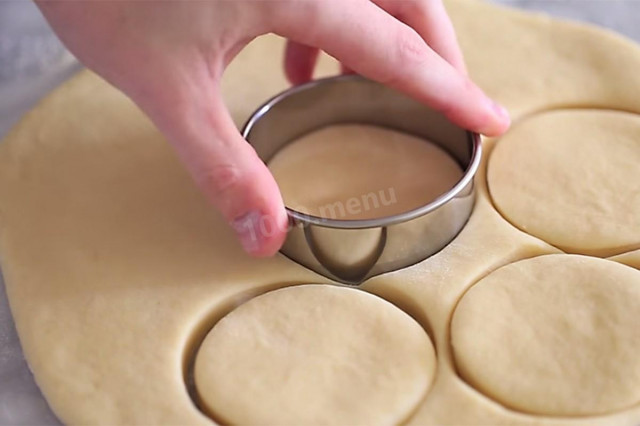Composition / ingredients
Step-by-step cooking
Step 1:

How to make yeast dough with sour milk? To prepare the yeast dough, prepare all the necessary ingredients. They should all be at room temperature. Sour milk can be warmed up a little more to a slightly warm state. At the same time, the yeast will ferment more actively.
Step 2:

Dissolve the dry yeast in a small amount of warm water with sugar. Let them stand for 2-3 minutes so that they wake up and the fermentation process begins.
Step 3:
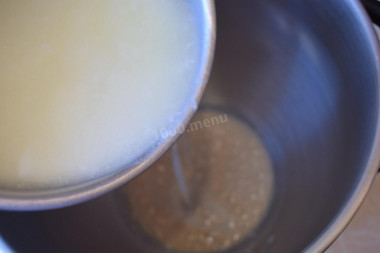
Pour the yeast mass into the bowl in which you will knead the dough. Pour warm sour milk into them.
Step 4:
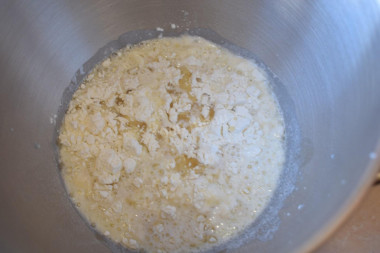
Add a pinch of salt and vegetable oil to the dough. Sift the flour through a sieve to saturate it with oxygen and gradually pour it into the kneaded dough.
Step 5:
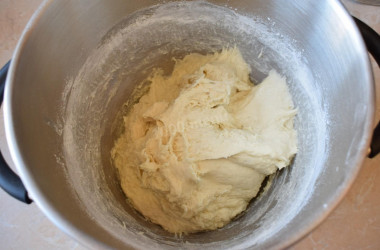
In this way, knead the yeast dough. It will stick to your hands a little. Put the finished dough in a warm place and cover with a towel. Let the dough come up within an hour.
Step 6:
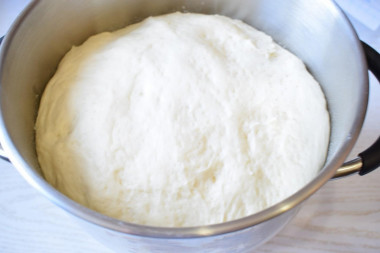
The dough will rise very actively.
Step 7:
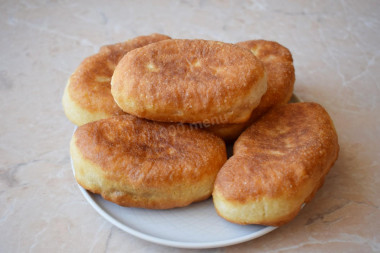
Use it to make delicious pastries. Cook with pleasure!
Experienced housewives never lose anything. And sour milk can be used to make pancakes, pancakes or yeast dough.
Sour milk has a pleasant faint curd-whey smell, and spoiled milk has a very sharp and unpleasant. So don't mix it up.
Such dough can be prepared for the future to cook pastries from it for several days. It is perfectly stored in the refrigerator for several days. The dough for pies contains a minimum set of products in its composition. And if you decide to make butter dough, then you will have to add eggs and butter to it.
As you can see, there is nothing complicated in the preparation of yeast dough. And do not think that it is available only to experienced housewives. Stick to certain rules and tips and everything will work out for you.
By the way, yeast can be used both dry and live. In this test, dry ones can be replaced with 30 grams of live yeast.
Be prepared for the fact that flour may need more or less than indicated in the recipe. Focus not on the amount of flour, but on the desired consistency of the dough. To avoid mistakes, read about flour and its properties!
It is important to sift the flour to saturate it with oxygen. Then the baking will turn out to be airy and will rise well when baking.
Important! Using dry yeast, it should be borne in mind that they occur in two forms: active and instant (read the instructions carefully before use!).
Active dry yeast looks like beads or small balls. Before applying them, they must be brought out of the "sleep mode". To do this, the active yeast is diluted in warm sweet water, milk or whey. The resulting bubbles, foam or "cap" indicate that the yeast is ready for further use. Active dry yeast must be brought to complete dissolution in the liquid, otherwise, due to the remaining grains, the dough may not rise and the baking will be spoiled (yeast grains that have not dissolved in the liquid and got into the dough will not disperse on their own, which means they will not work).
Instant dry yeast is easier to use. They do not need to be activated before use. Such yeast, along with other ingredients, is simply added to the dough. As a result, the baking time is reduced.
It should also be remembered that both types of dry yeast may differ in their activity from different manufacturers.
Caloric content of the products possible in the composition of the dish
- Whole durum wheat flour fortified - 333 kcal/100g
- Whole durum wheat flour, universal - 364 kcal/100g
- Flour krupchatka - 348 kcal/100g
- Flour - 325 kcal/100g
- Granulated sugar - 398 kcal/100g
- Sugar - 398 kcal/100g
- Vegetable oil - 873 kcal/100g
- Salt - 0 kcal/100g
- Water - 0 kcal/100g
- Dry yeast - 410 kcal/100g
- Sour milk - 60 kcal/100g

